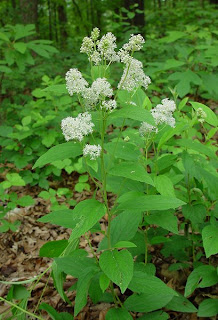LOTUS

Latin Name: Nelumbo nuciferum
Alternate Names: Sacred Lotus, He Ye (Chinese), Padma (Sanskrit), Lianzi (Sees), Kamala (Hindi), Oujie (Chinese - Root), Lian Zi (Chinese - Seed)
Family: NELUMBONACEAE
Parts Used: Nodes of root, seeds, above ground portion.
Properties: Aphrodisiac, Astringent, Cardiotonic, Emmenagogue, Hemostatic, Hypotensive, Rejuvenative, Sedative, Tonic.
Internal Uses: Alcohol Poisoning, Asthma, Attention Deficit, Bleeding, Colds, Cough, Diarrhea, Hemorrhoids, Mushroom Poisoning, Sinusitis, Speech Problems, Stuttering, Uterine Hemorrhage, Whooping Cough
Internal Applications: Use seed and root with rice as aphrodisiac. Seeds are used as calmative and cardiotonic. The seeds are also used to improve stuttering, speech difficulties and concentration. All parts of the Lotus are used in some way as medicine. Lotus root helps to disperse stagnant mucus. It has a special affinity for the repiratory system.
Lotus helps move blood stagnation and also stops bleeding. The part of the lotus that connects the two roots is considered to have the most medicinal properties.
Lotus helps move blood stagnation and also stops bleeding. The part of the lotus that connects the two roots is considered to have the most medicinal properties.
Topical Applications: Poultice, flowers for perfume.
Culinary uses: Leaves, young stalks, petals, seeds and rhizomes are all edible. Lotus root flour is used as a thickener in sauces. Young tender parts may be eate raw in salads or cooked as a vegetable. The leaves are used for wrapping items to be baked or steamed. The beautiful flower petals can be floated atop soup.
Energetics: Bitter, Sweet, Cooling.
Chemical Constituents: Asparagine, tannin, nelumbine, carotene, vitamin B-1 and B-2, niacin.
Contraindications: Avoid in cases of indigestion and constipation.
Comments: The leaves are cooling. The genus name, Nelumbo, is from the Sri Lankan name of the herb. Nuciferum means 'nut-bearing'. Lotus is often considered the sacred flower of India, a symbol of spiritual unfoldment. Indeed, the Lotus is so beautiful that in India just looking at it is considered medicinal. It is also linked to Lakshimi, Goddess of Prosperity. Both Horus, the Egyptian Sun God, and Brahma are said to have been born of Lotus flowers. In many parts of the world, Lotus is planted as a devotional flower and offered in religious ceremonies. Its five petals are said to represent the five stages of the Hindu Wheel of Life -- birth, initiation, marriage, rest and death. It is an aquatic plant. In the Greek tradition, lotus was eaten to induce a dreamy state, but in Chinese medicine it is used to relieve dreaminess.

